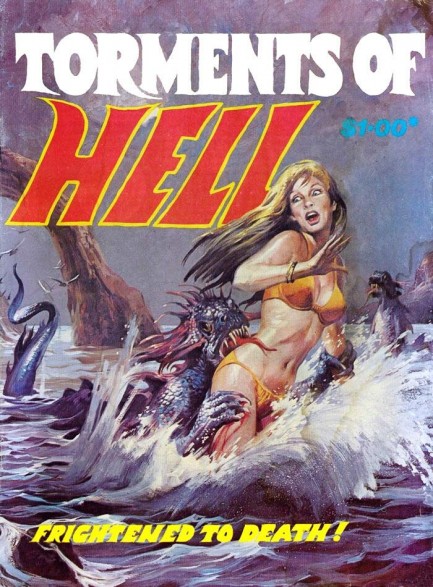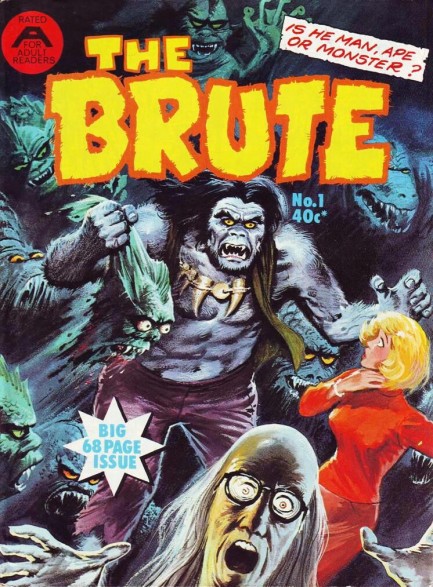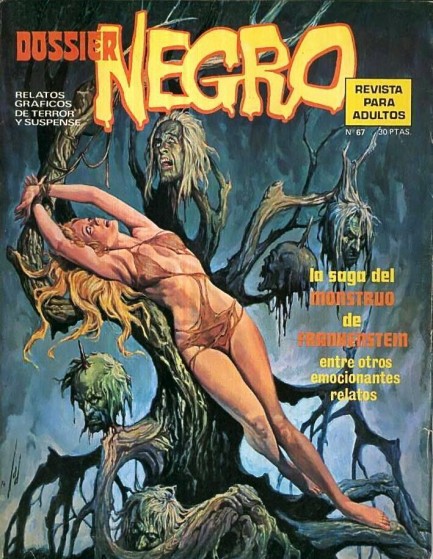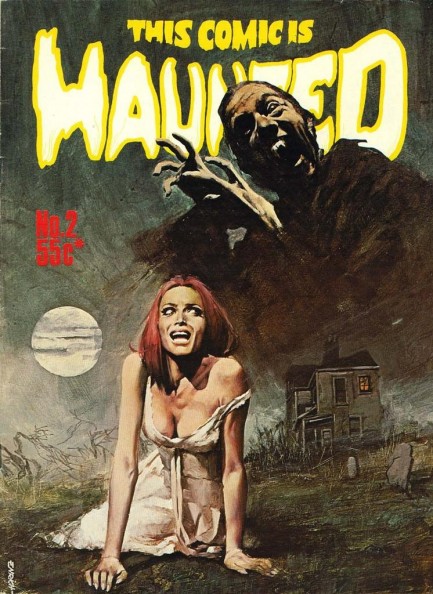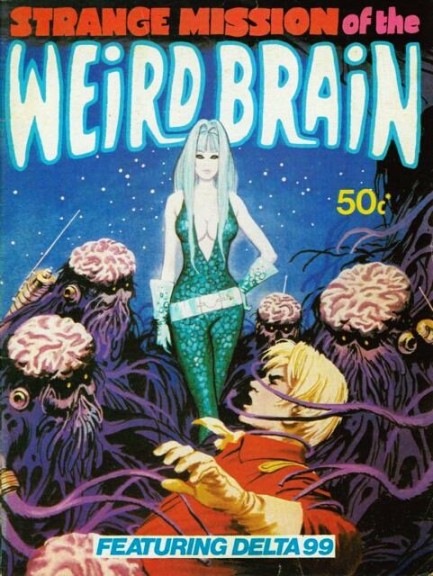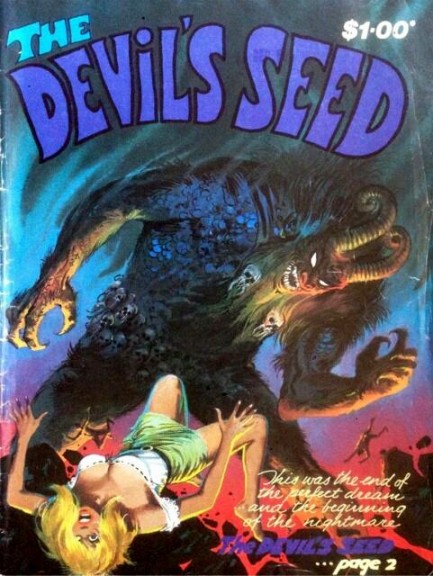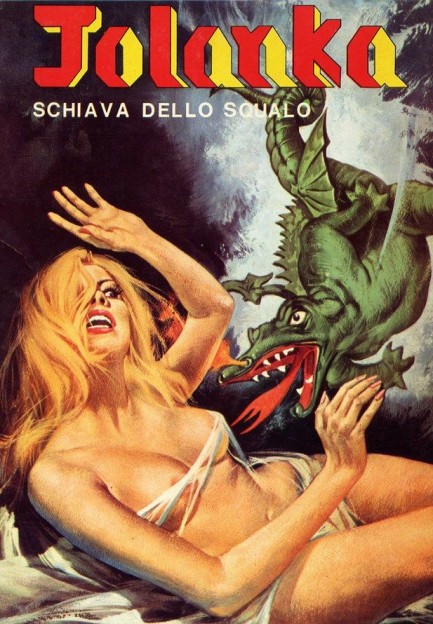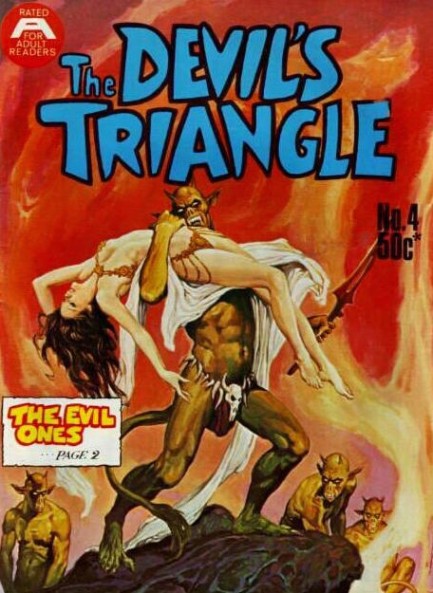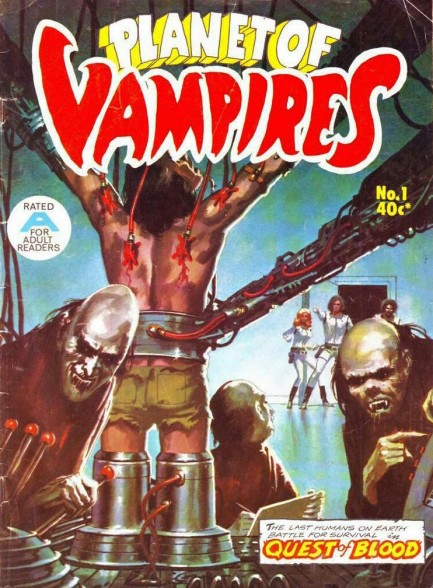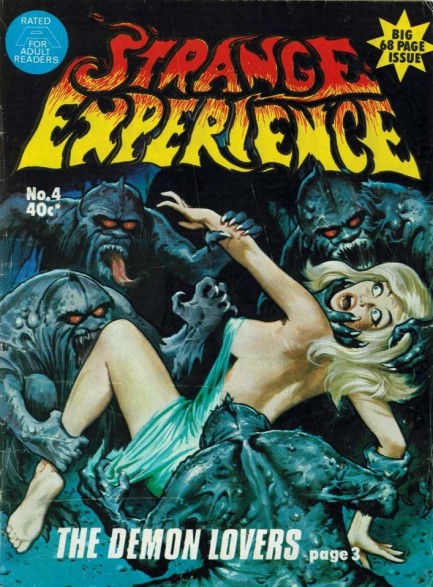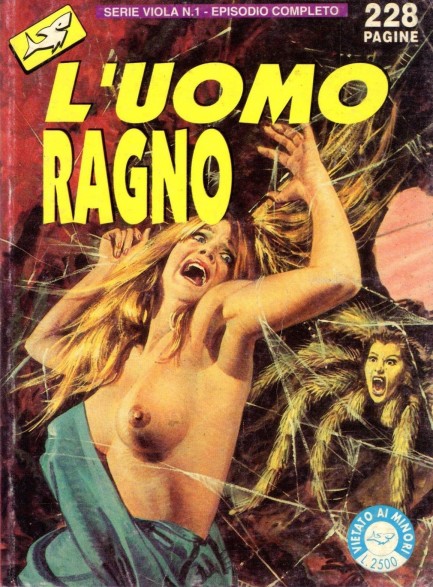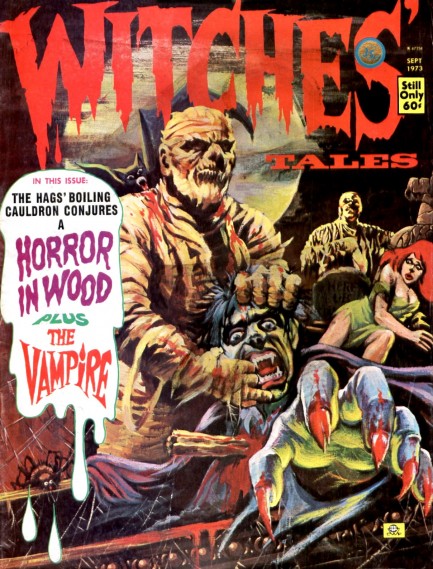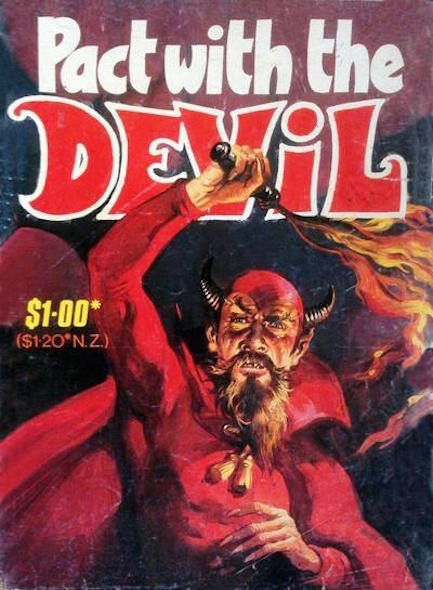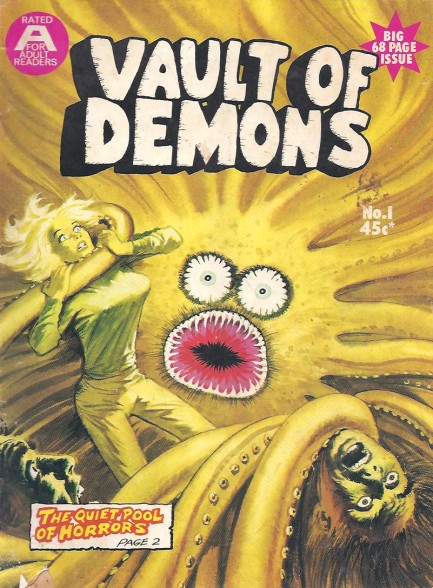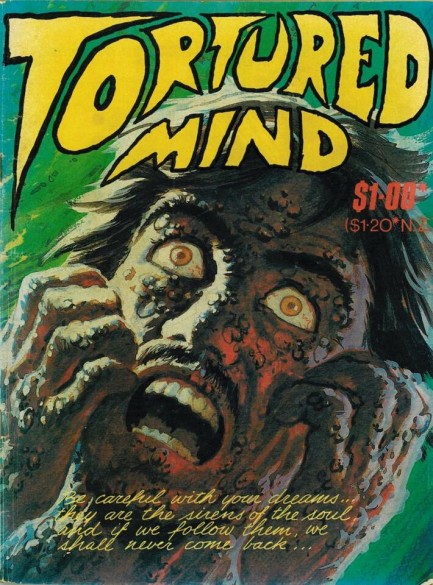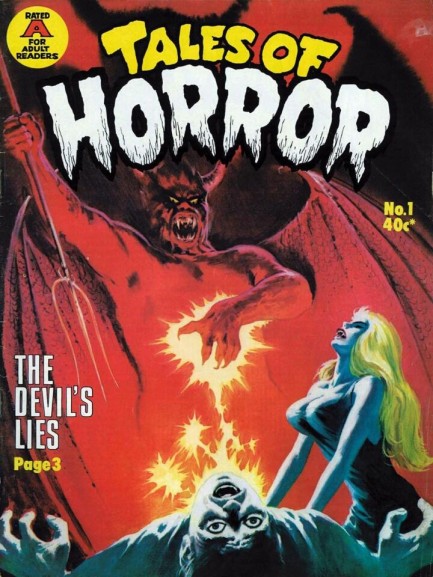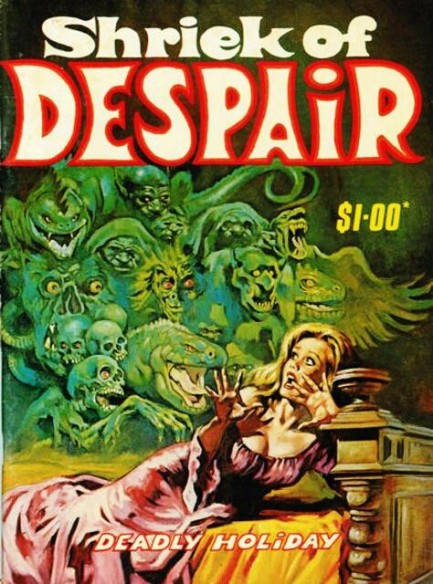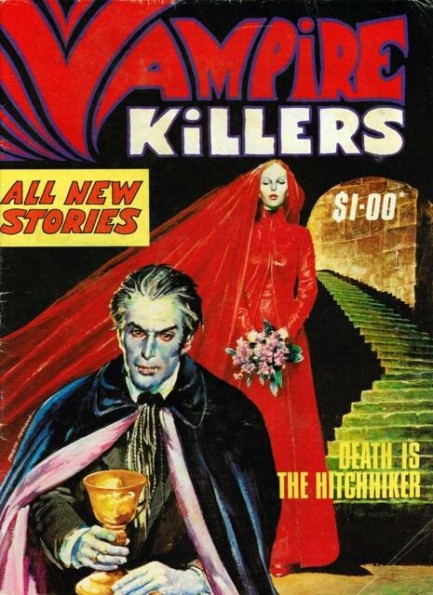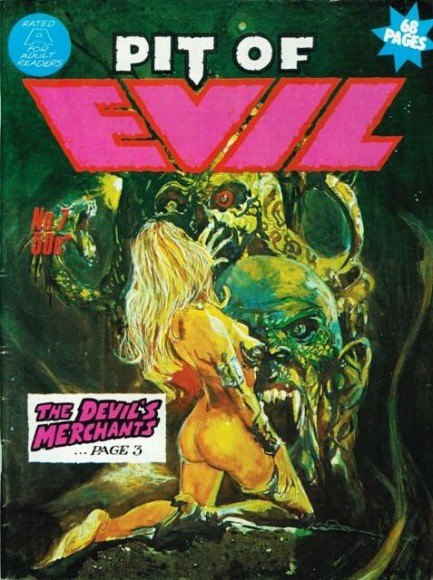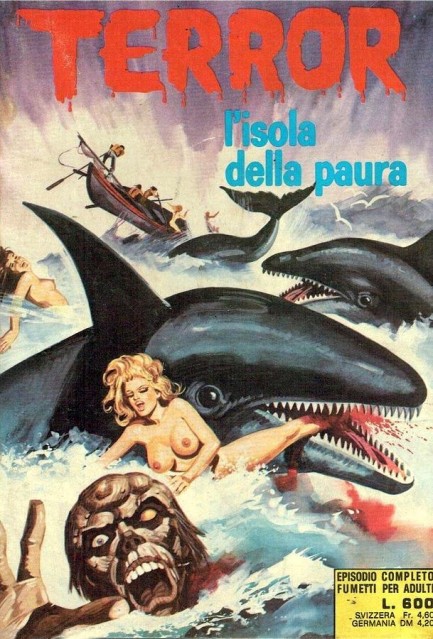 In all Modesty, she was one of the best fictional spies of her era.  
This nice off-center watercolor shows the iconic comic strip spy Modesty Blaise, and was painted by Jim Holdaway, possibly as he was finalizing the look of the character in collaboration with author Peter O'Donnell before premiering her in the London Evening Standard in May 1963. He illustrated Modesty's adventures for seven years, until felled by a heart attack. O'Donnell wrote a series of Modesty Blaise novels, expanding them in a slightly more adult direction, which made them about as much fun as lightweight, espionage oriented boner bait could be. We've talked about the movie and several of the books, so if you're curious just click the keywords “Modesty Blaise” below and scroll.
 Well, looks like them bandits is gone, miss. And now, I'm powerful curious about several aspects of your predicament. 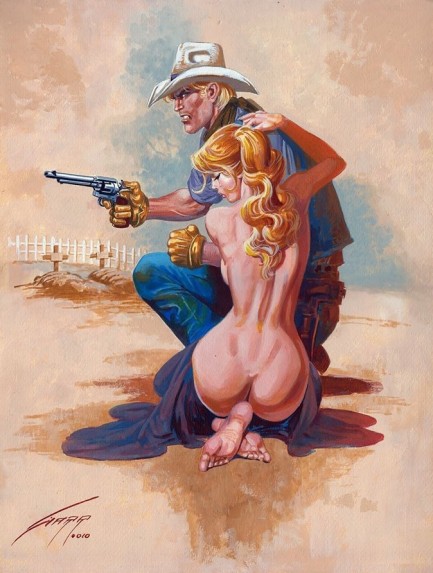
Above you see a piece of modern Mexican comic book art painted by Rafael Gallur for the cover of issue #771 of La Ley del Revolver, published in 2010. Many questions could be asked here, but none can be answered without buying the comic book. Perhaps we'll do that down the line. We've shared other work from Gallur before and, like this one, it's extremely lurid. Check it out here.
 Collectors drive price of comic book sky high. 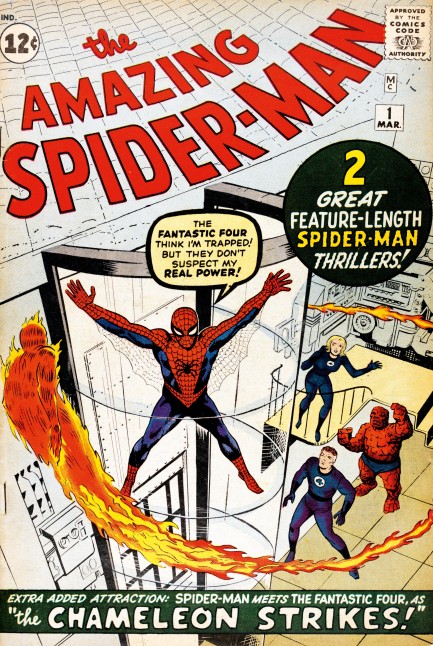
Have you ever seen a million dollar comic book? Now you have. A copy of the Marvel's Spider-Man #1, originally published in 1963, sold at auction a couple of days ago for $1.38 million. The comic was considered to be in near-perfect condition, and shattered the previous record for a Spider-Man #1, which had sold for $520,000. You know our rule. Never pay exorbitantly for something that you can use to swat a fly. But see, that's exactly why we aren't rich. Inability to see the big picture. We're starting to see it now, though. We have a lot of rare and unusual publications, and there could be value in them one day. How sweet would it be if our copy of A Visual History of Lovemaking Toys eventually became worth a million dollars? It isn't in near-perfect condition anymore though, because we left it out and the Pulp Intl. girlfriends got hold of it. But still.
 Before Superman, Batman, and Spiderman there was the Phantom. 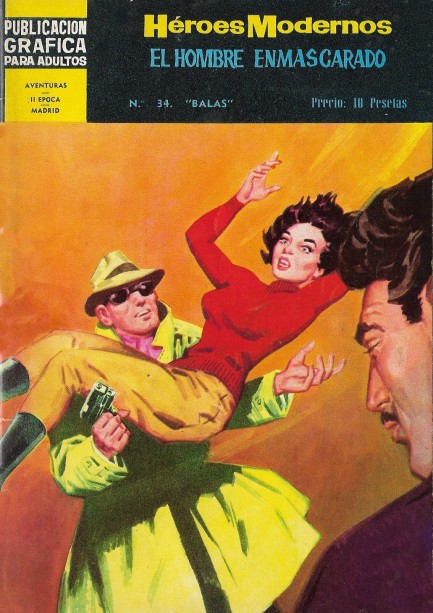
We picked up a copy of El Hombre Enmascarado late last year when we were passing through Granada, and in typical fashion, it's taken us almost a year to scan anything from it. But never let the early become the enemy of the late, or something to that nonsensical effect, so above you see the cover of issue thirty-four, written and illustrated by Lee Falk and published in 1960 by Editorial Dolar as part of its Héroes Modernos series. However, Dolar was merely translating a U.S. serial. There the main character was known as the Phantom, originating as a daily syndicated comic strip. This episode is titled “Balas,” or “Bullets.” The only credit inside is for Falk, but we're actually unsure whether he was the sole hand behind this. Although Falk was an artist, Phantom strips are generally credited to three cartoonists—Ray Moore, Wilson McCoy and Seymond Barry.
Falk invented the character of the Phantom in 1936, which makes him a precursor to modern superheroes. He even predates Superman, who came in 1936, and Batman, who arrived in 1940. His background is fun. During the age of piracy, Sir Christopher Standish was killed in an attack that his son survived. That son swore to fight evil in his father's name, and pledged that his descendants would too. So each new Standish generation inherits a costume and fights crime, perpetuating the idea among the public that the masked vigilante is immortal—a phantom. In addition to the costume he carries two pistols and two rings: one bears the image of a skull, which he uses to mark foes by slugging them in the jaw. The other ring is a peace symbol. His sidekick is a wolf and he also sometimes rides a white stallion. We've scanned a few interior pages plus the slightly defaced rear cover for your enjoyment. And perhaps—who knows?—we'll have more from the masked man later.
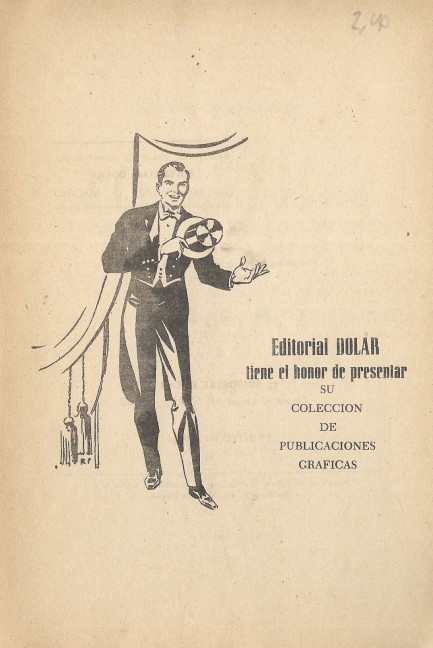 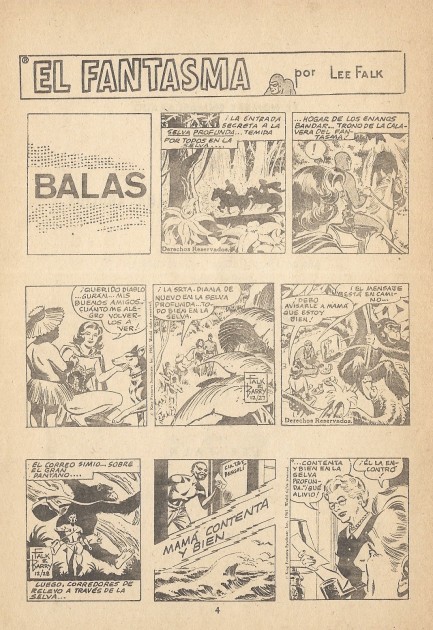 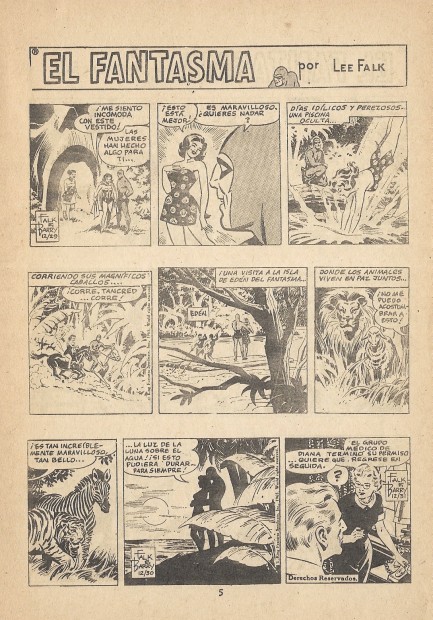 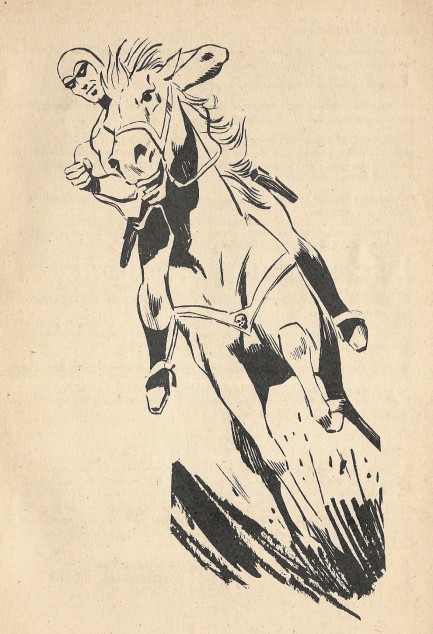 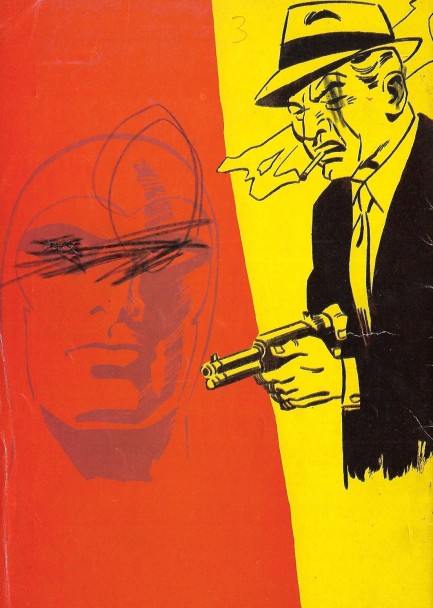
 What's a crime? Being unable to identify the artist. 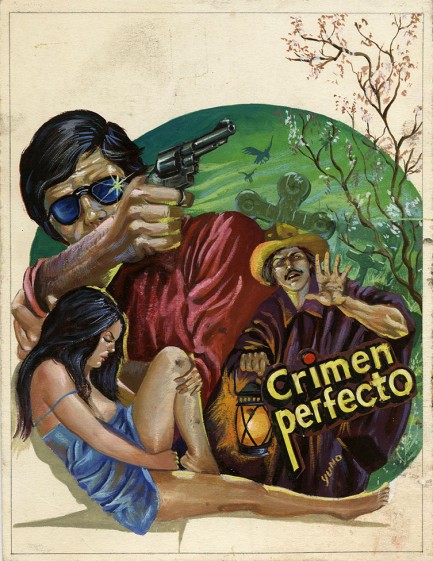
Has the Mexican crime art revival passed? Maybe, but not on Pulp Intl. We've talked about this niche quite a bit, and today we're veering back in that direction to share this piece entitled “Crimen Perfecto,” painted during the early 1980s by someone who signed as Yuno. Yuno who? We dunno. Do you? You do? Let us know. Actually, we don't expect you to know, because these artists were rarely properly credited, nor properly compensated, we suspect. For that reason they never could have expected interest in their work to rekindle, but it did, and for a while auctions in these were pretty active, both online and in brick-and-mortar. The technical execution on display isn't what you'd usually find in classic paperback art, but as critic Ken Johnson wrote in the New York Times in 2015, “The value of [Mexican crime] paintings isn’t to be found in their aesthetic sophistication or refinement. This is truly art for the masses, as kitschy as it is amusing.” He forgot to mention horrifying and violent. A smart person once said that violent societies have violent amusements, and Mexico, like the U.S., has certain strains in its culture that persistently glorify mayhem. Art such as this gives you a glimpse of that, put to pasteboard via brush and paint. While the artists remain mostly unknown, what they produced resonates all these decades later. See more wild Mexican crime art here, here, here, and here.
 Vampires never get old, in legend or in publishing. 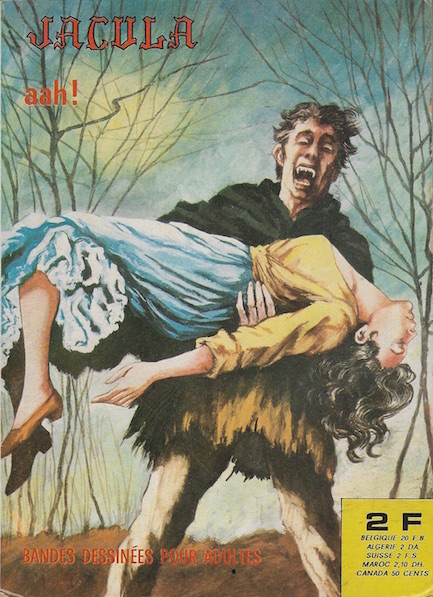
Above you see a cover from the long running Elvifrance bande dessinée Jacula, with uncredited art. We picked this up from a Paris bouquiniste a few weeks ago. The backstory here is that a woman named Jacula Velenska is bitten by a vampire and, once turned, roams far and wide quenching her thirst for blood. She's accompanied by her vampire husband Charles Verdier, and his dog servant Wolf. This is in French but the series originated in Italy as a fumetti, or adult comic book, and ran from 1969 to 1982 for a total of 327 issues, which strikes us as quite a lot. Our French reprint is from 1971 and is 14 in the series. We were anticipating some foundational Jacula vamp action, but were surprised to discover that it deals almost entirely with a loup garou, or werewolf, named Charles, and how he ends up eating his own child and wife. At the end of the tale he encounters Jacula, who he captures and plans to kill before thinking better of it, for reasons that are unclear. It could be this is the same Charles that later becomes her companion. We'll figure it out. One of the reasons we bought this was to practice French, which comes in handy where we live. We said the cover art was uncredited, but generally they were painted by three guys—Leandro Biffi, Fernando Tacconi, and Carlo Jacono. Thanks to the powers of the internet we were able to determine that this one is by Biffi. The interior art by Alberto Giolitti is a bit more basic, which is usually true of comic books, but you're buying these for the story, 112 pages of it in this case, written by Giuseppe Pederiali. We have a few scans below, and if you want to see more from Elvifrance, start here.
 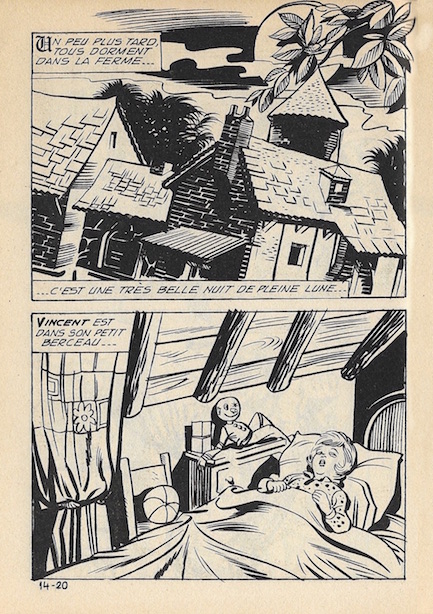 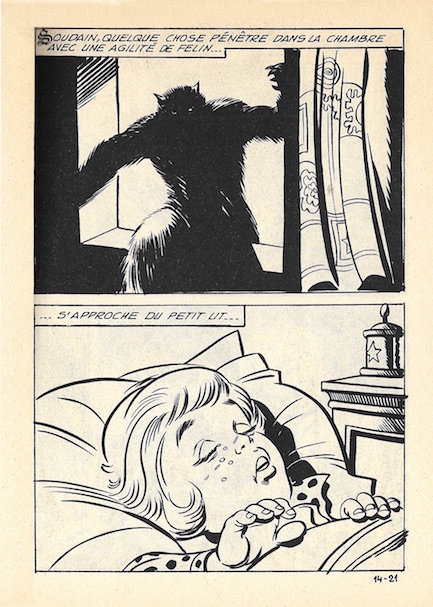 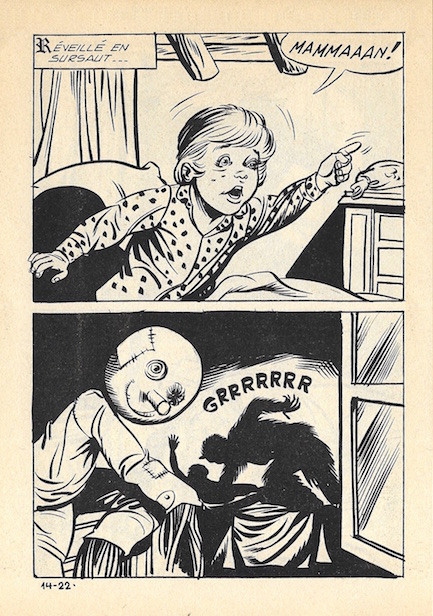 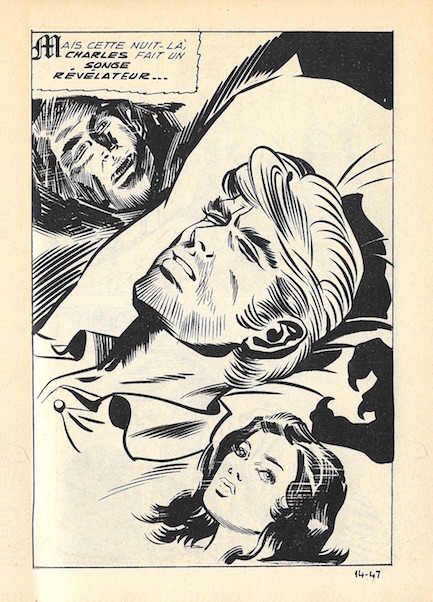 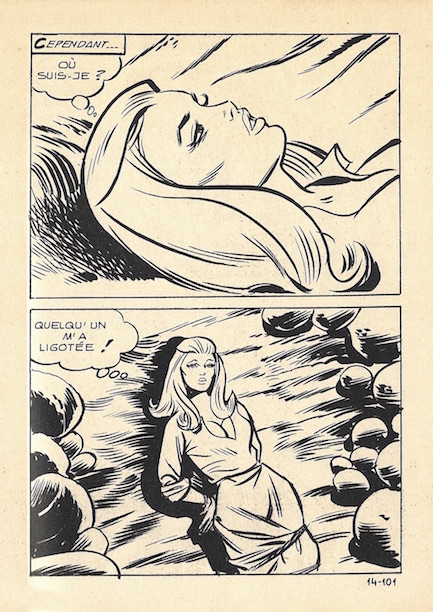 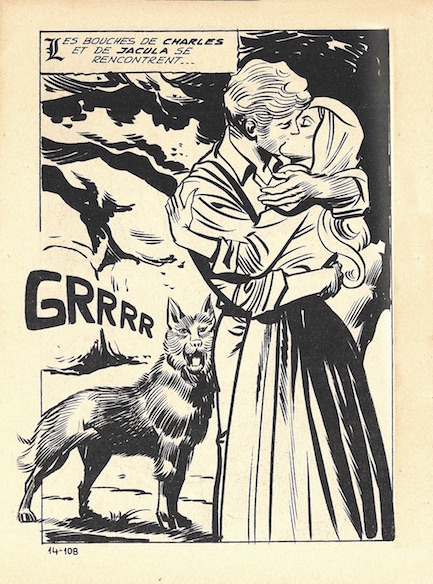
 They're actually a little rude but the French don't seem to mind 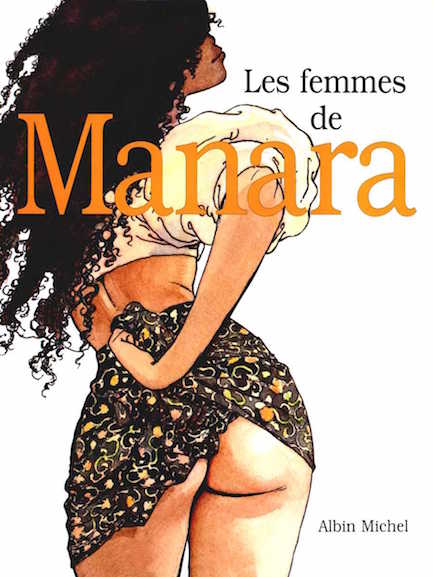
Here you see the cover and few scans from Les femmes de Manara, which is a compendium from 1995 featuring published as well as previously unseen women created by the agile hand of Milo Manara, one of the great illustrators of graphic novels. He was born in Italy and was copiously published both there and in France, and remains extremely popular all over Europe. His niche is explicit erotica, and he's done it better than just about anyone, populating his books with lithe, beautiful women who manage to get into the weirdest scrapes. In Il Gioco, aka Click or Le Déclic, for example, the character Claudia Cristiani has an implant placed in her brain to help her with sexual arousal, which is all well and good until the remote control that operates it breaks and she's left in an ongoing nymphomaniacal state. It was made into a movie which we may discuss later, by the way. In Gulliveriana Manara's heroine survives a storm at sea only to find herself stranded naked on an island of tiny people. No movie of that, though we'd love to see one made. Anyway, these panels will certainly give you an idea why Manara became an icon in his field. He's still active, and maintains a nice website, frequently updated. So for more info on this master illustrator look there. 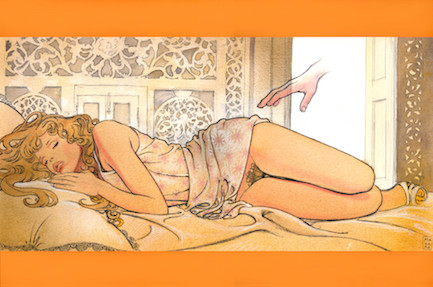 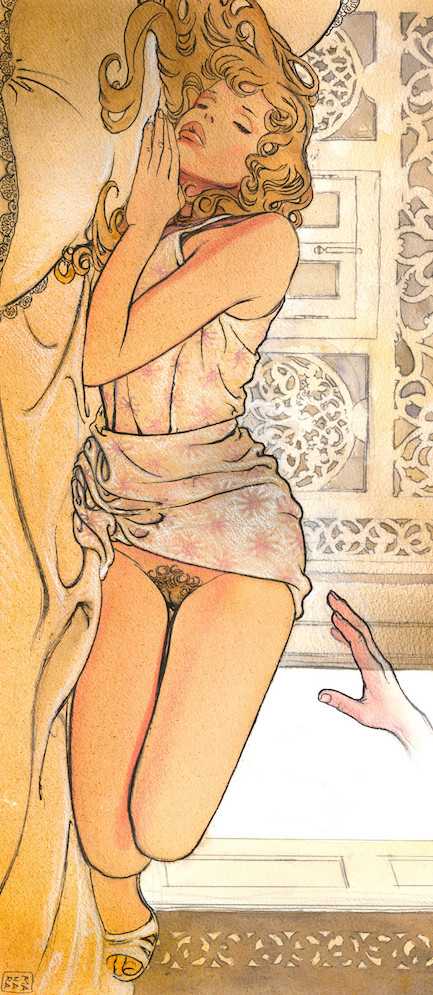 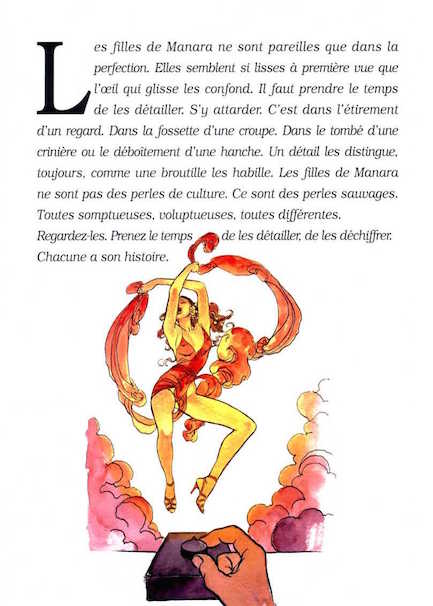 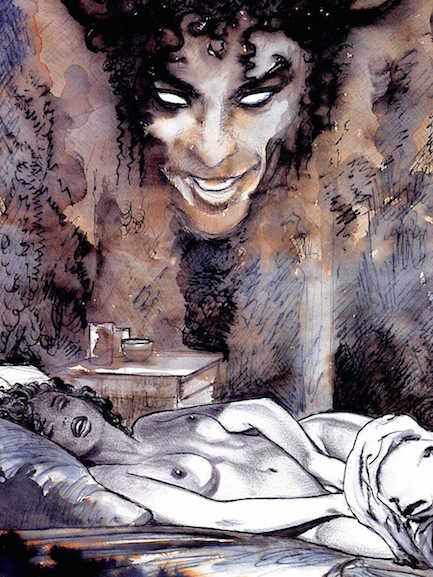 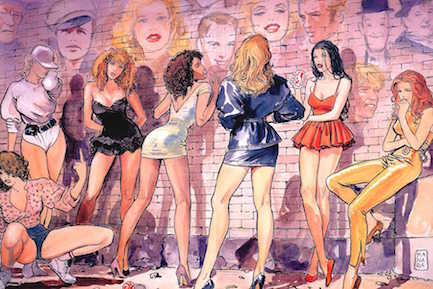 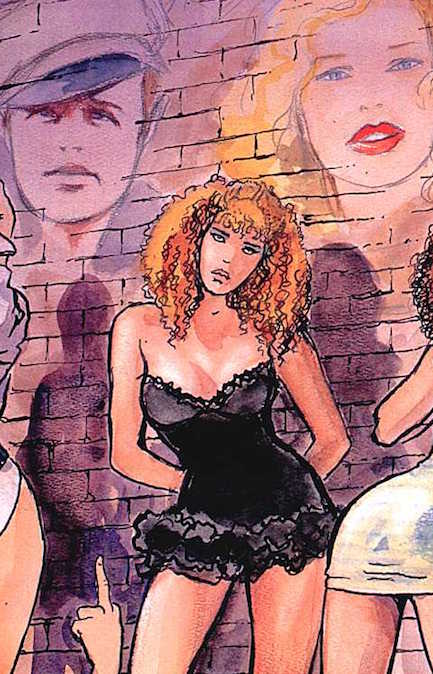 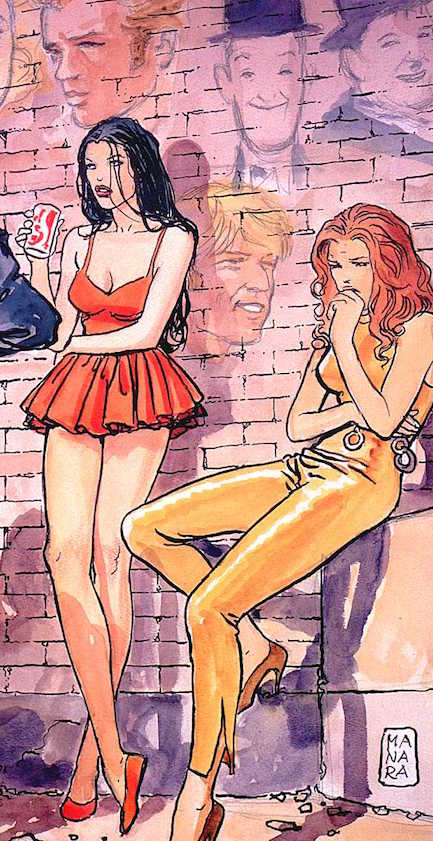 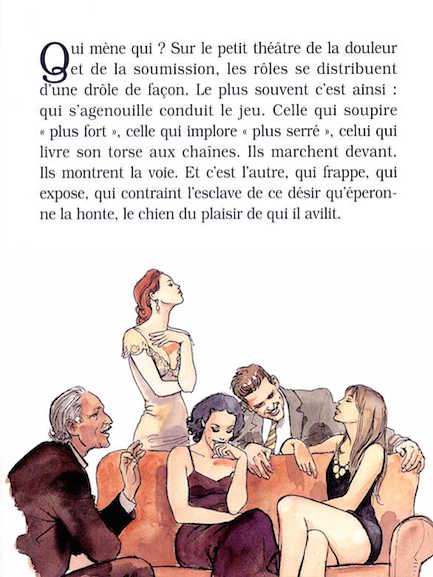 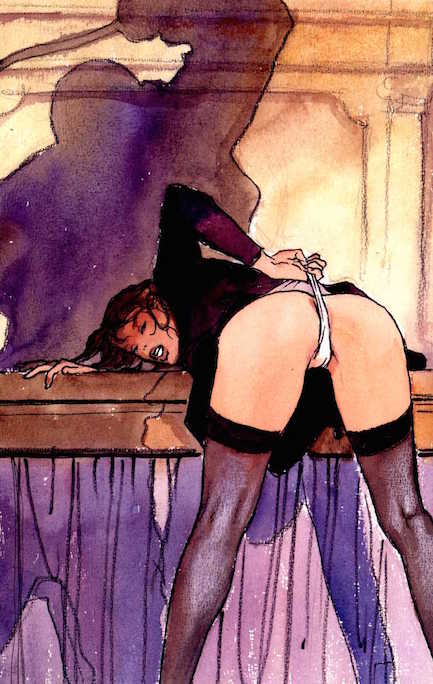 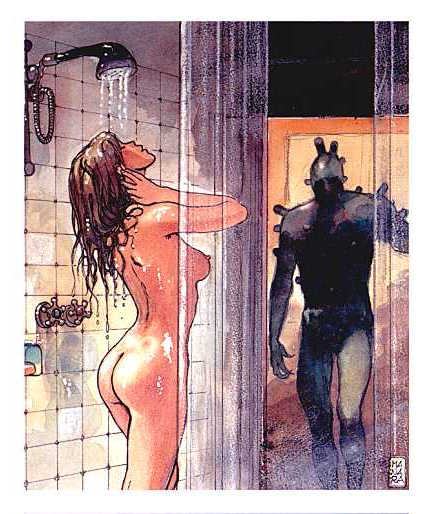  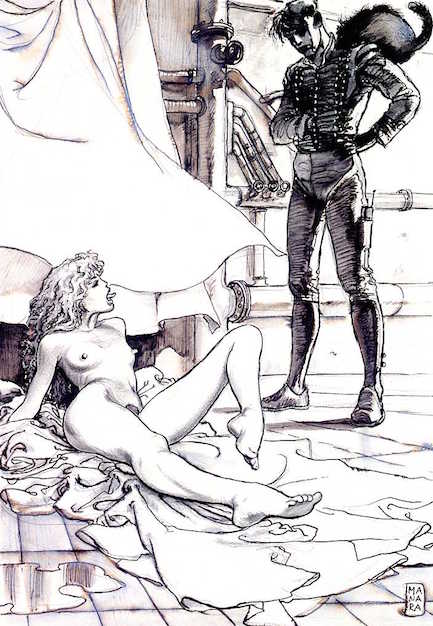 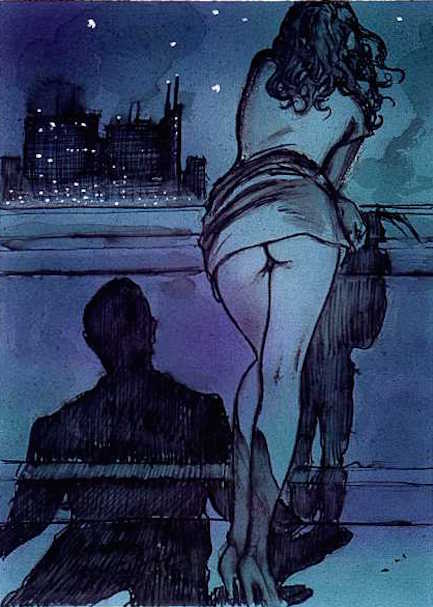 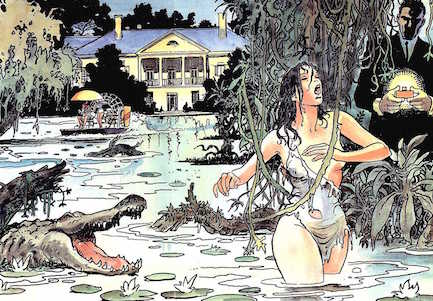 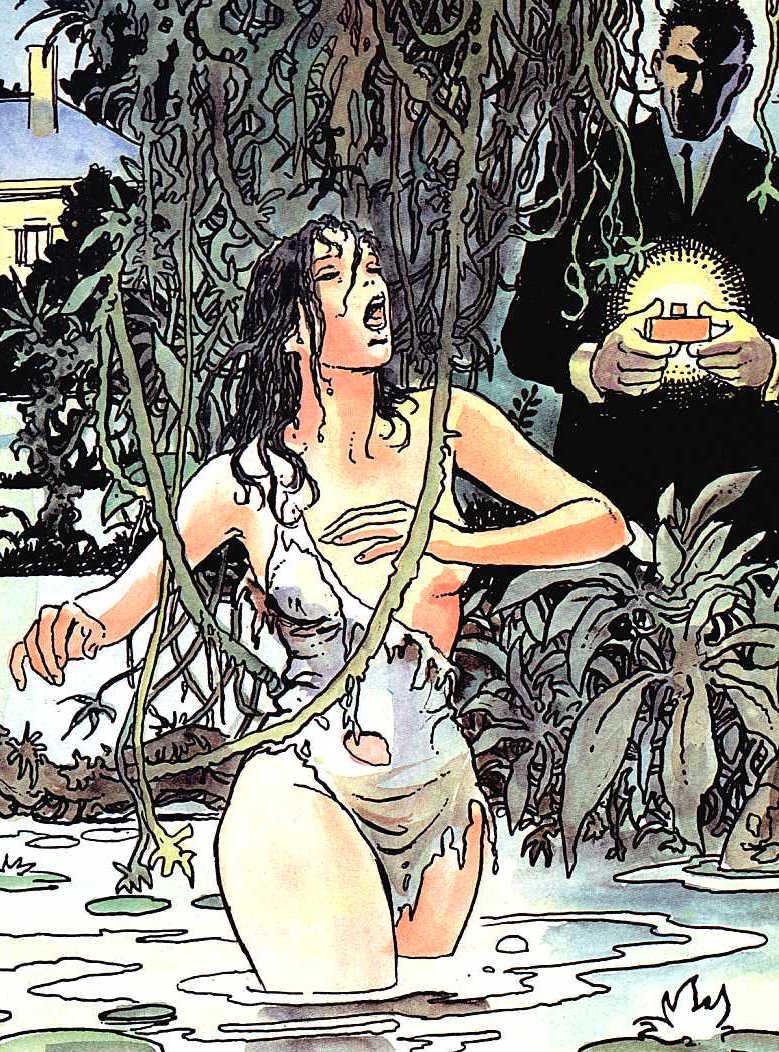 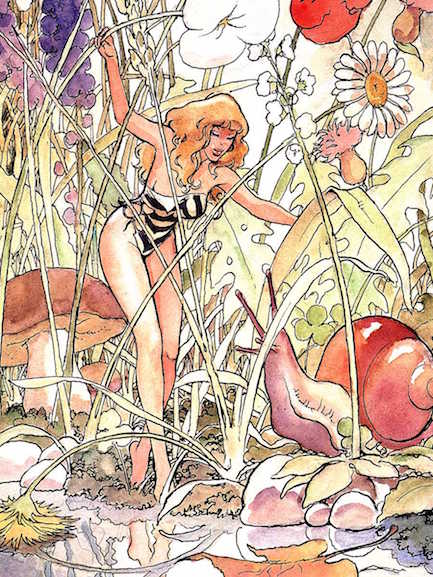 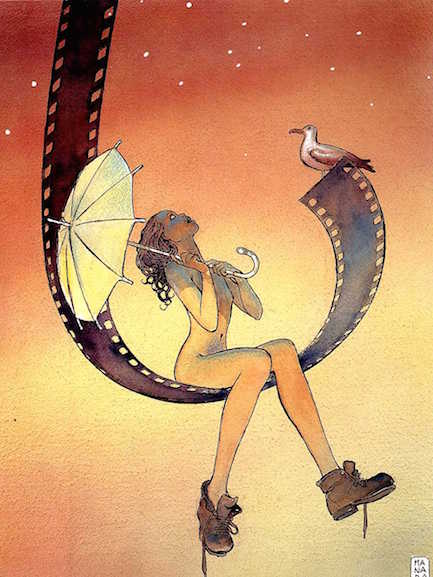 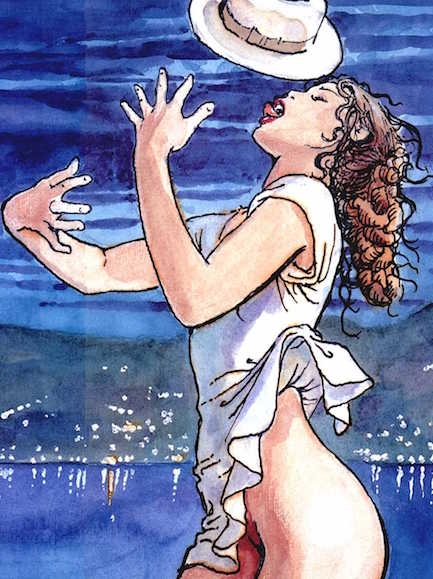 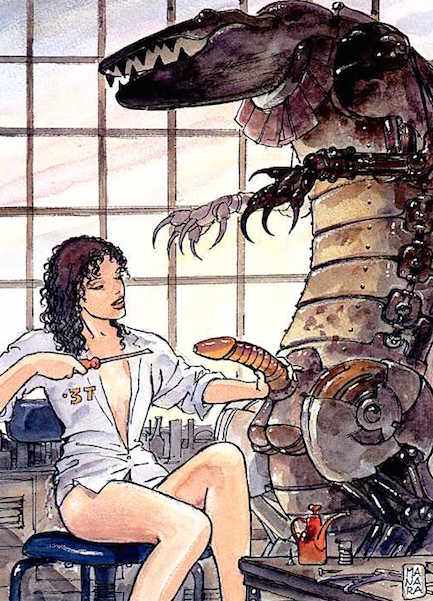 .jpg) 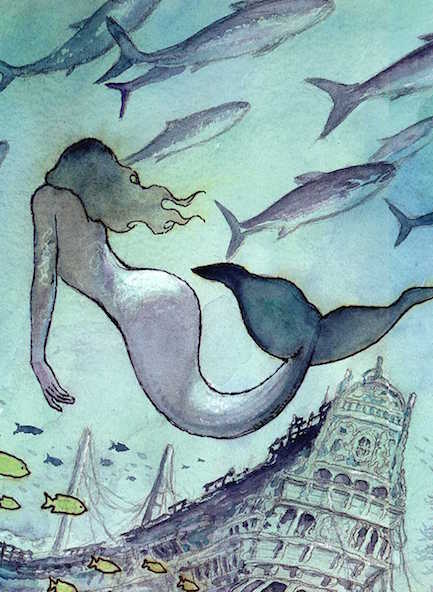 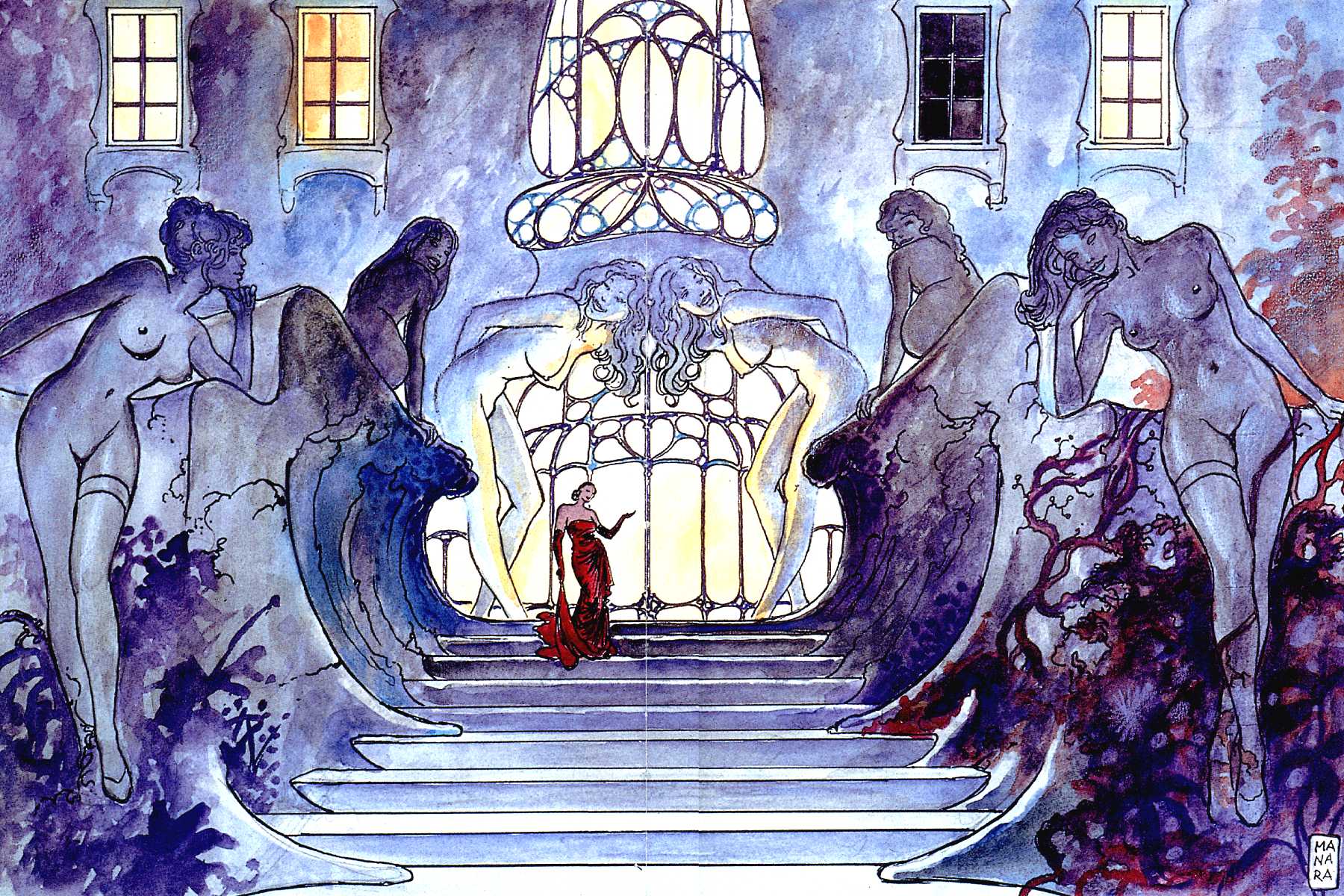 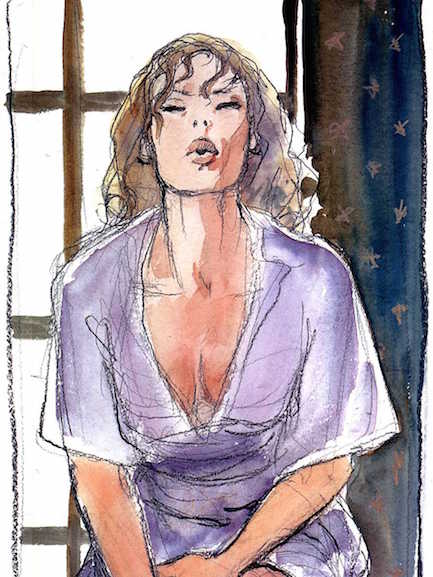
 Mexican comic book artists left no wickedness unexplored. 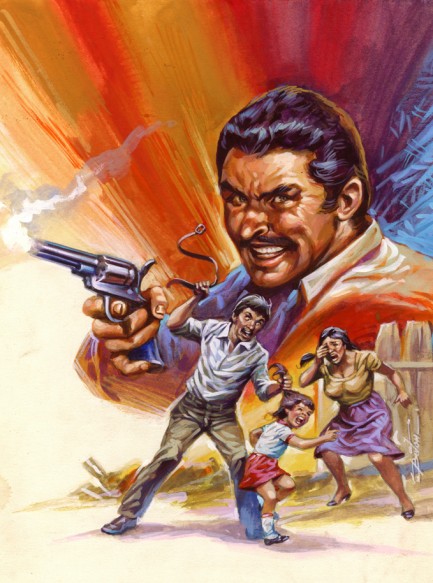
In Mexican comic book art of the 1980s and after, which is a subset of modern pulp we've documented before, a motif that recurred was the looming head. Multiple artists used this idea, which can only mean it was encouraged or sought by the publishers of series such as Micro-Misterio, Frank Kein, and Sesacional de Maistros. We have a mini-collection today of art pieces with floating heads. The creators include Beton, Dagoberto Dinorin, Rafael Gallur, and others. Also, we've learned that Dinorin often worked as a colorist, filling in the pencil drawings of other artists, particularly Gallur. So it's possible Dinorin had a hand in the piece signed by Gallur. We'll get into that subject more at a later date. We have nine more scans below, and since the Mexican comic book market thrived on transgressive violence, a few of them are a bit disturbing. You've been warned. 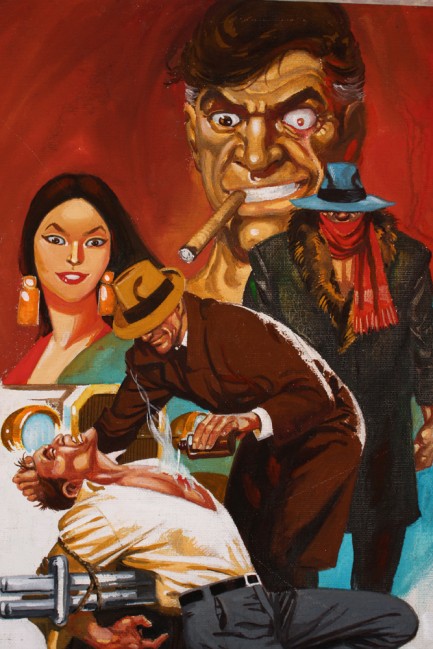 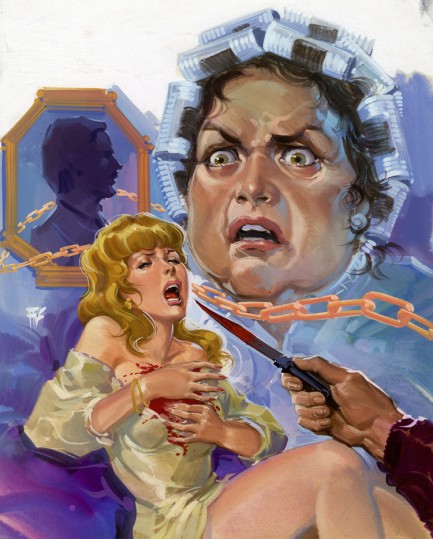 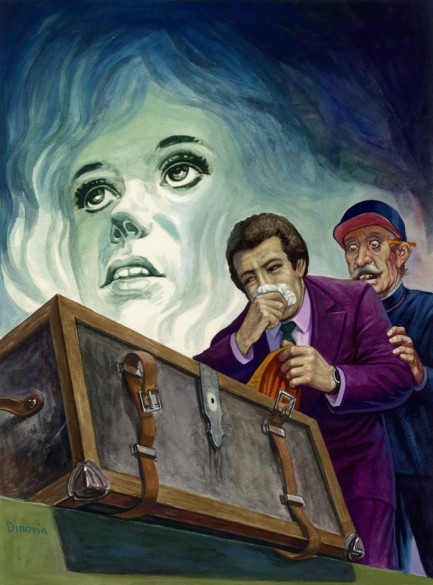 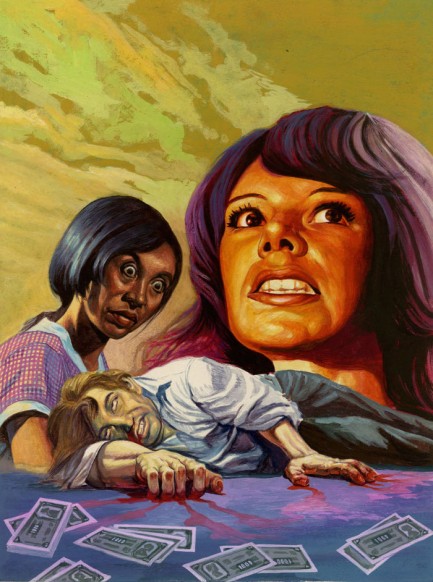 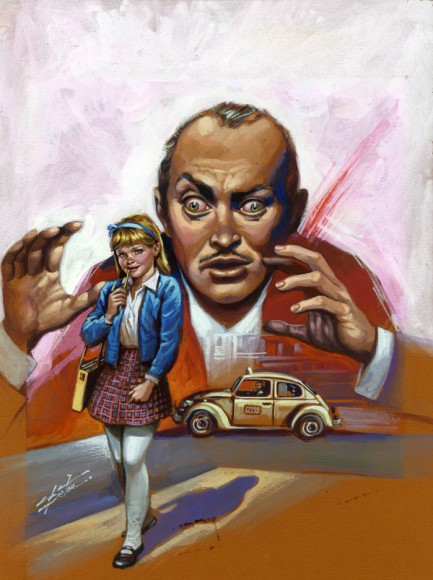 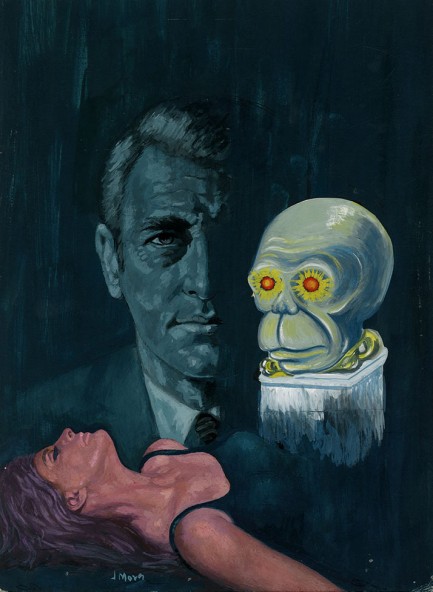 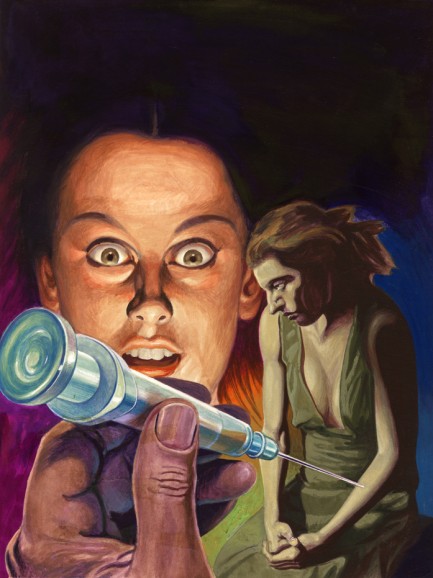 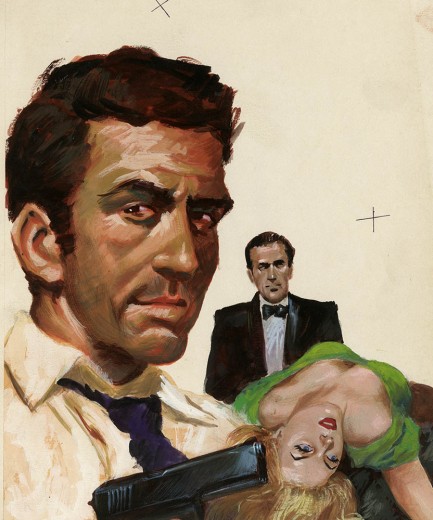 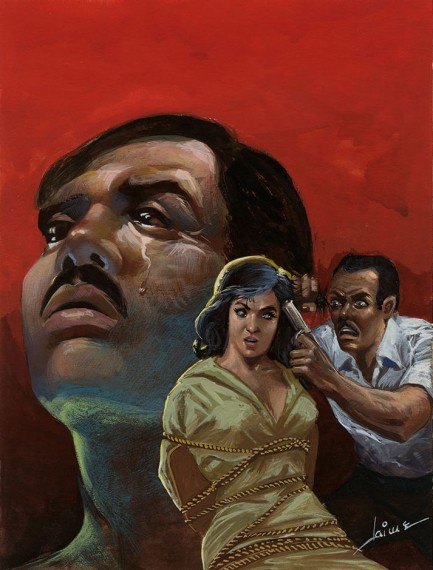

|
 |

The headlines that mattered yesteryear.
2003—Hope Dies
Film legend Bob Hope dies of pneumonia two months after celebrating his 100th birthday. 1945—Churchill Given the Sack
In spite of admiring Winston Churchill as a great wartime leader, Britons elect
Clement Attlee the nation's new prime minister in a sweeping victory for the Labour Party over the Conservatives. 1952—Evita Peron Dies
Eva Duarte de Peron, aka Evita, wife of the president of the Argentine Republic, dies from cancer at age 33. Evita had brought the working classes into a position of political power never witnessed before, but was hated by the nation's powerful military class. She is lain to rest in Milan, Italy in a secret grave under a nun's name, but is eventually returned to Argentina for reburial beside her husband in 1974. 1943—Mussolini Calls It Quits
Italian dictator Benito Mussolini steps down as head of the armed forces and the government. It soon becomes clear that Il Duce did not relinquish power voluntarily, but was forced to resign after former Fascist colleagues turned against him. He is later installed by Germany as leader of the Italian Social Republic in the north of the country, but is killed by partisans in 1945.
|

|
|

It's easy. We have an uploader that makes it a snap. Use it to submit your art, text, header, and subhead. Your post can be funny, serious, or anything in between, as long as it's vintage pulp. You'll get a byline and experience the fleeting pride of free authorship. We'll edit your post for typos, but the rest is up to you. Click here to give us your best shot.

|
|














































.jpg)




















